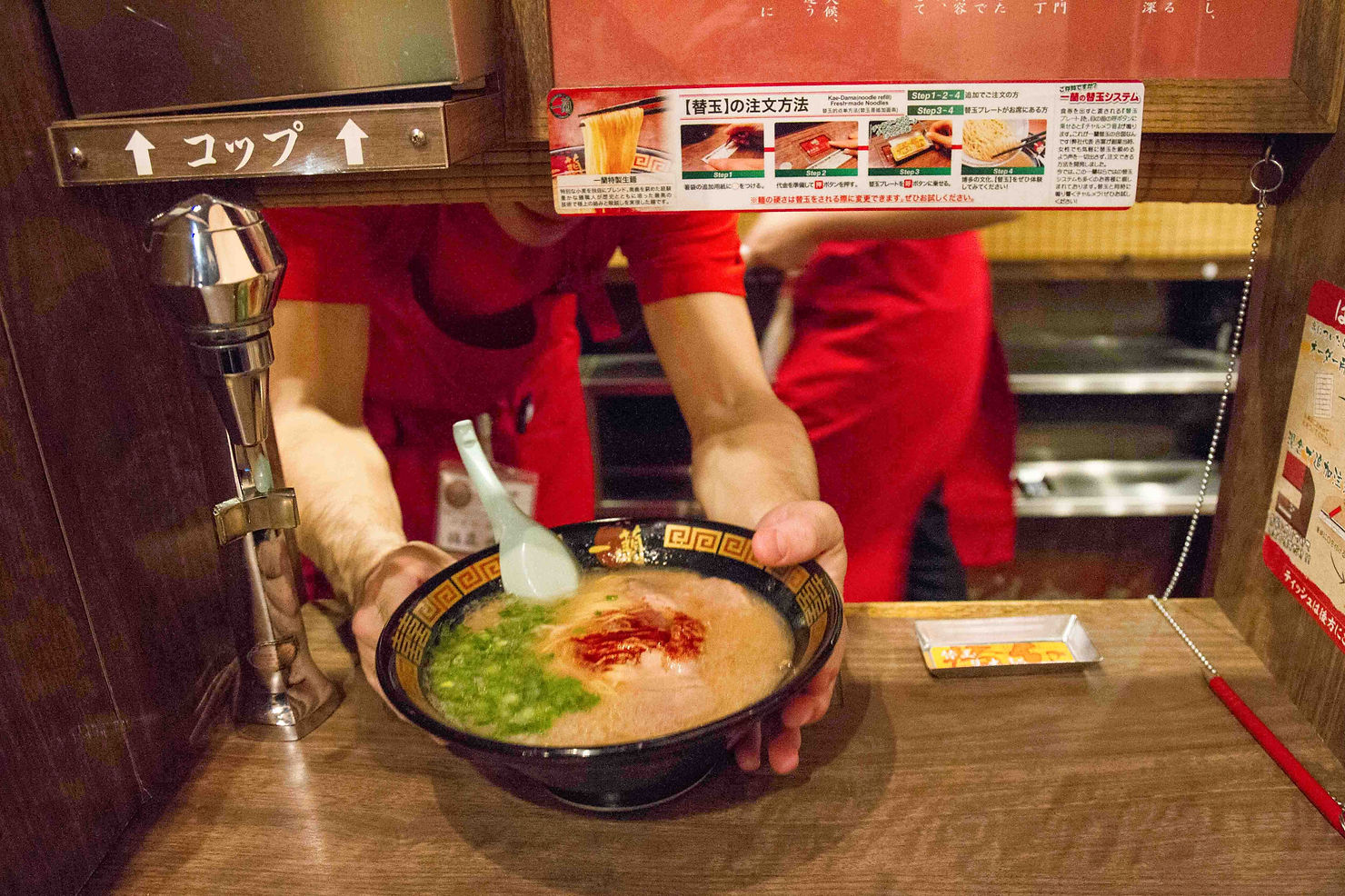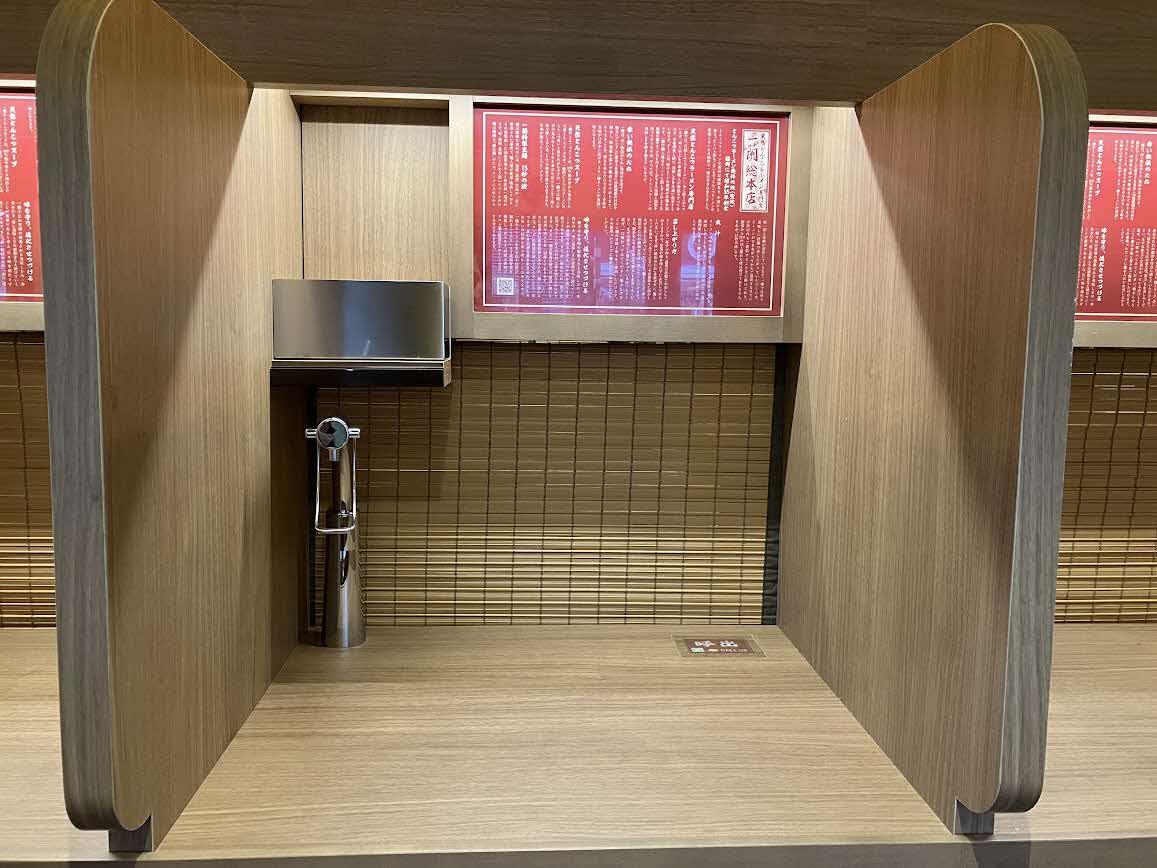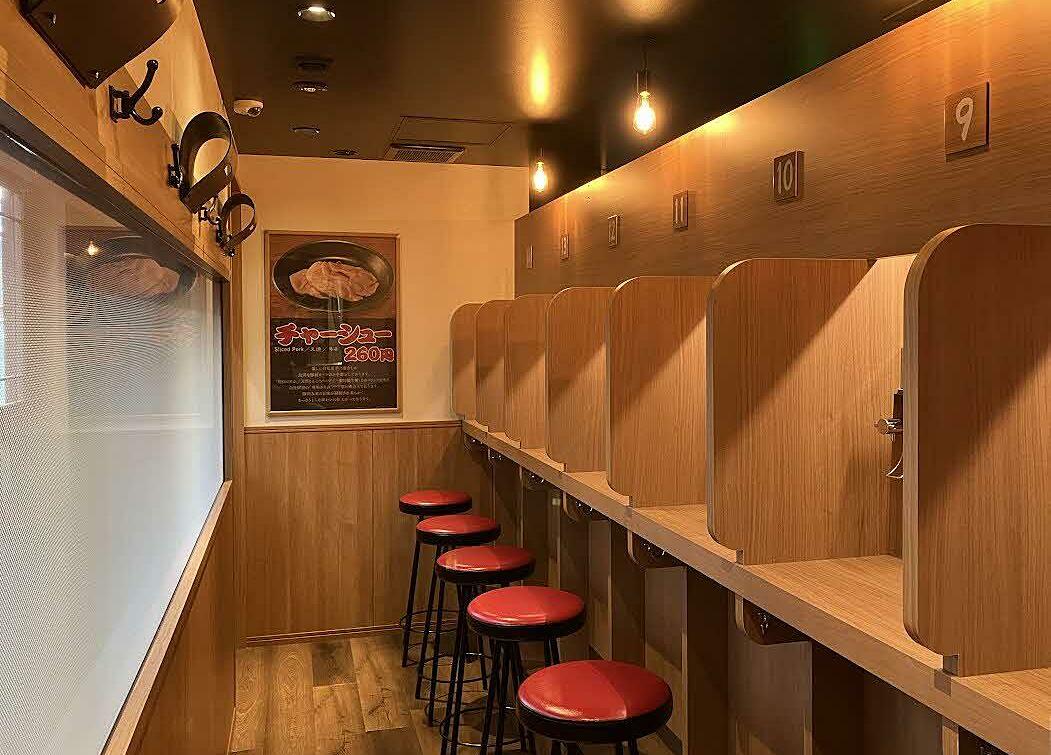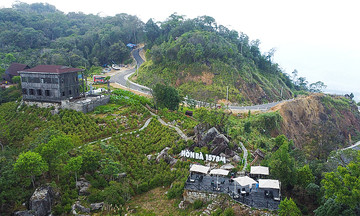Ichiran Ramen, a globally renowned ramen chain originating in Fukuoka, Japan, in 1960, is known for its tonkotsu ramen (pork bone broth) and unique dining experience. With over 80 branches worldwide, including Tokyo, Osaka, New York, Hong Kong, and Taiwan, Ichiran is a destination for ramen lovers.
Ichiran's dining space design, often called the "Flavor Concentration Counter" or "Ramen Focus Booth," is one of its most distinctive features. Customers typically sit in individual partitioned booths, facing a wall or bamboo curtain that separates them from the staff. For groups, the partitions between booths can be lowered for conversation, but the design emphasizes individual focus. Customers order their food at a machine outside the door beforehand. Here are some of the reasons behind this design.
 |
Seating is divided into private booths. Photo: VisitFukuoka |
Seating is divided into private booths. Photo: VisitFukuoka
Focus on the food. The individual booths are designed to minimize distractions, allowing diners to fully concentrate on their meal. Facing a wall or curtain, customers are shielded from the hustle and bustle of the restaurant and other diners, creating a meditative dining experience. Focusing on the bowl of ramen, eating quickly, and minimizing conversation also demonstrate respect for the chef's efforts and the distinctive flavor of the ramen.
Space optimization. In Japan's major cities, living and business space is often limited. Ichiran restaurants are located in crowded, expensive areas, so their footprints are usually small. The wall-facing table arrangement maximizes space, allowing more customers to dine than with conventional table layouts, especially in ramen shops known for their large crowds.
Respecting privacy for solo diners. In Japanese culture, privacy is highly valued. Facing the wall provides privacy for diners, especially those dining alone, minimizing interaction with others. This is even more important in crowded restaurants. It attracts both locals and tourists, particularly those who might feel self-conscious eating alone or have language barriers.
 |
Staff will lift the curtain to serve ramen. Photo: Visit Fukuoka
 |
Private dining space. Photo: Visit Fukuoka
Fast service. Sitting facing a wall or curtain suits a fast, assembly-line service model. The seats are within easy reach of the chef, and customers are served within about 15 seconds of preparation to preserve the perfect texture of the noodles. This design also originates from the long-standing street ramen stalls in Fukuoka, where quick, simple service counters are common.
Tam Anh (Tokyoramentours, VisitFukuoka)












